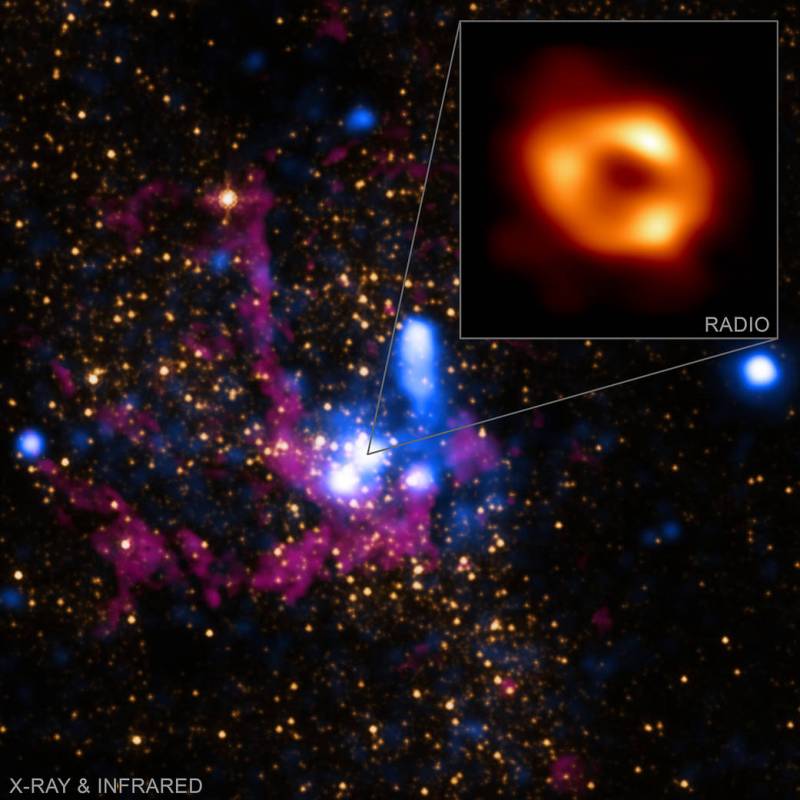Black holes have long been a source of public fascination, but they also pose notorious challenges to researchers, mainly because their gravitational fields are so strong that they either bend light or prevent it from escaping entirely. But scientists have been able to detect and study them based on the powerful effects they exert on their surroundings.
In the case of Sgr A*, scientists have previously observed stars orbiting around the Milky Way’s center. Now they have a direct view of what Feryal Özel, a professor of astronomy and physics at the University of Arizona, called the “gentle giant” itself.
Putting the size of the black hole into an Earthling’s perspective, the team said that seeing it from the surface of our planet would be like trying to spot a donut on the moon.
“What made it extra challenging was the dynamic environment of Sgr A*, a source that burbled then gurgled as we looked at it,” Özel said, “and the challenges of looking not only through our own atmosphere, but also through the gas clouds in the disk of our galaxy towards the center. It took several years to refine our image and confirm what we had, but we prevailed.”
 The main panel of this graphic shows hot gas, in blue, that was blown away from massive stars near the black hole. Infrared light depicts stars as orange and cool gas as purple. A pull-out shows the new image of the black hole named Sagittarius A*. (X-ray: NASA/CXC/SAO; Infrared: NASA/HST/STScI. Inset: Radio, EHT Collaboration)
The main panel of this graphic shows hot gas, in blue, that was blown away from massive stars near the black hole. Infrared light depicts stars as orange and cool gas as purple. A pull-out shows the new image of the black hole named Sagittarius A*. (X-ray: NASA/CXC/SAO; Infrared: NASA/HST/STScI. Inset: Radio, EHT Collaboration)
More than 300 researchers collaborated on the effort to capture the image, compiling information from radio observatories around the world. To obtain the image, scientists used observations from April 2017, when all eight observatories were pointed at the black hole.
“Although we cannot see the black hole itself, because it is completely dark, glowing gas around it reveals a telltale signature: a dark central region (called a ‘shadow’) surrounded by a bright ring-like structure,” the EHT team said in its announcement.
The researchers announced the news Thursday morning at the National Press Club in Washington, D.C., but it was simultaneously released around the world, in a series of news conferences held in Mexico City, Shanghai, Tokyo, and other cities.
“We were stunned by how well the size of the ring agreed with predictions from Einstein’s Theory of General Relativity,” said EHT Project Scientist Geoffrey Bower, from the Institute of Astronomy and Astrophysics at the Academia Sinica in Taipei.
The discovery comes three years after the Event Horizon Telescope Collaboration released the first-ever image of a black hole — but that work focused on the center of galaxy Messier 87, tens of millions of light-years away from Earth in the Virgo cluster of galaxies.
Commenting on the similarities of the two images, of a dark shadow surrounded by a bright ring, Özel stated, “It seems that black holes like donuts.”
Still, she said, the two black holes are very different from one another — for one thing, the Milky Way’s black hole isn’t as voracious.
“The one in M87 is accumulating matter at a significantly faster rate than Sgr A*,” she said. “Perhaps more importantly, the one in M87 launches a powerful jet that extends as far as the edge of that galaxy. Our black hole does not.”
Copyright 2022 NPR. To see more, visit https://www.npr.org.9(MDAxOTAwOTE4MDEyMTkxMDAzNjczZDljZA004))



















